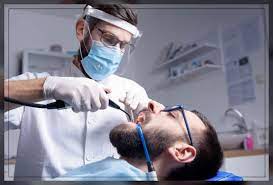Unlocking Oral Health: Essential Aids for Effective Dental Care at Home
Routine dental exams are crucial for managing appropriate oral hygiene and diagnosing possible dental issues. But they are not a “fix-all” solution. This should be combined with meticulous oral home care habits that should be exercised daily to bypass future dental problems.
Patient education offered by the dentist in Breckenridge, CO, provides helpful insights about oral hygiene aids. Let’s explore some important oral hygiene aids to understand the importance of oral care.
| Oral hygiene aids are special dental devices that help clean your oral cavity. These tools help remove food residue and plaque, a bacterial film that causes tooth decay, gum disease, and halitosis (bad breath). |
What are some of the common oral hygiene aids used?
There are numerous types of oral hygiene aids, and you can determine what suits you best based on your oral condition. These include the following:
- Toothbrush
-
- According to the American Dental Association (ADA), you are advised to use a soft-bristled toothbrush in a circular motion.
- Currently, electric toothbrushes are gaining traction due to improved precision and dexterity.
- You just brush twice daily, and your manual toothbrushes require replacement every 3 months.
- Dental floss
-
- This is a common interdental and subgingival cleaner.
- The floss is made up of nylon filaments or polyethylene ribbons.
- Floss should ideally be used twice a day.
- Interdental brushes
-
- These aids are used in conjunction with dental floss to clean the contours of your teeth in between the gums.
- Oral irrigators
-
- Oral irrigators like water jets are specially designed to clean the debris from below the gum line.
- Water is sprayed at a specific speed to eliminate food residue and bacteria.
- Rubber tip stimulators
-
- These are excellent tools for removing plaque from around the gum line, which also improves the blood flow to the gums.
- Tongue cleaner
-
- These are special devices that have been designed to remove the buildup of bacteria, plaque, and food debris from the tongue surface.
- These tools are made up of metal, wood, or plastic and can significantly eliminate bad breath.
- Mouth rinse
- There are two types of mouth rinses: cosmetic and therapeutic rinses.
- They help reduce bad breath, plaque, and cavities.
- These are generally used after brushing.
Conclusion
Oral hygiene aids play a crucial role in maintaining oral health and preventing dental problems such as tooth decay, gum disease, and bad breath. By incorporating appropriate oral hygiene aids into your daily routine and practicing good oral hygiene habits, you can achieve and maintain a healthy smile for years to come.


